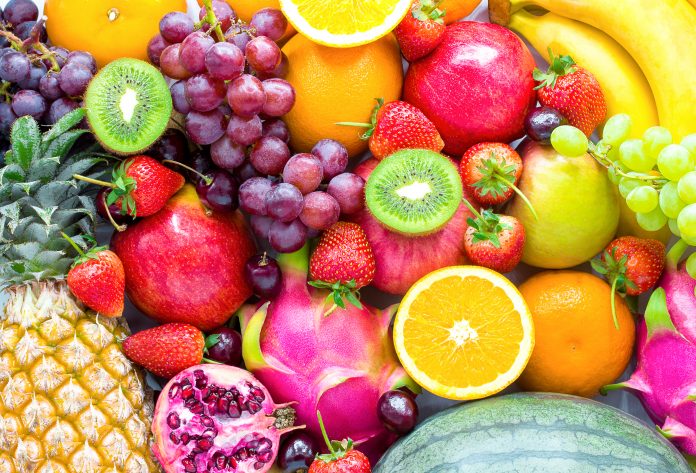Genesis chapter-2
“And out of the ground made the God to grow every tree that is pleasant to the sight, and good for food”
Since evolution, man ate food of the ground. Every tree that bore fruit became food for all creatures big and small.
Is fruit good or bad for you?
Nutrition guru’s say —“Seventy percent of your plate at each meal, should be filled with fruit or vegetables of all colours”
This quote can be misleading, what is important to know is that fruit especially should be eaten in moderation to get the full nutritional benefits.
I’m about to share some important facts and myths on fruit,
how to consume them, and when to consume them to reap maximum health benefits —
Sugar the silent killer is naturally found in fruits, vegatables, dairy products and grains, is processed and made edible in different forms —
Glucose
Sucrose – refined table sugar
High Fructose – corn syrup
Fructose from fruit
Lactose – dairy sugar
What is the difference and how does it affect your health?
Facts versus Myths —
Fact — Natural unprocessed forms of sugar: Honey, fructose from fruit.
Fact — A nominal amount of sugar is good for your body, it’s instant energy, (glucose) however, consuming it in its most natural form is what gives it the health benefit.
Myth — People are of the belief that all forms of sugar are bad for you and added sugars have negative effects on health so they apply the same concept to fruit, which contain fructose. In reality, Fructose from fruit ranks highest in health benefits and moreover it is difficult to get excessive amounts of fructose with the consumption of whole fresh fruit, making fruit safe to eat.
Fact — Fructose can have effects on metabolic health if consumed in large amounts. A fruit before a workout is instant glucose to burn.
Fact — Whole fruit are packed with nutrients, vitamins and fiber, always eat your fruit instead of juice, (fruit juice has as much of sugar as added sugar beverages) the process of digestion begins with chewing, the saliva in your mouth mixed with the fruit fiber slows down the absorption of fructose in the intestines and liver. It is unprocessed whole fruit that retain all health benefits.
Myth — The skin of fruit is known to be rich in antioxidants and fiber, this statement holds true if you pluck your own fruit or eat only organically grown fruit. Commercial fruit are coated with a film to preserve the fruit for longer periods, This calls for peeling and discarding the skin of fruit and not ingesting it.
FYI – berries have more skin than most fruit gram for gram.
Fact — The fiber in fruit, especially soluble fiber found in fruit, reduce cholesterol, reduce risk of cardiovascular disease, help your body process sugar and provide instant energy.
Fact — Fruit are a nutritious snack, you can carry it anywhere and they make you feel full, fruit are “Nature’s fast food.” An apple contains 2 grams of fiber, 22 grams of sugar of which 13 are fructose and fill you to the brim like a meal. A Very helpful anytime snack when in a weight loss programs.
Myth — Dried fruit are as healthy as whole fresh fruit. Dried fruit are basically, whole fruit squeezed off their water content making the fructose content concentrated. Usually commercially dried fruit are dried using sulphur, this makes them, fibreless and much harder for the body to digest and their small size could lead to over indulging. Always opt for whole fresh fruit though dried fruit is a portable food that keeps well, and it’s better than no fruit at all especially when travelling.
Fact — Fruit is an entire food group, such a variety of edible fruit from thy bounty each providing different nutrient compositions of vitamins (vitamin C, potassium, folate,) minerals, anti oxidants and other plant compounds. Keep switching fruit, eat what’s in season and reap the full benefits.
Fact — To preserve the nutrients in cut fruit, you should freeze them.
Myth — People with diabetes should avoid fruit, this is a myth, in fact fruit is a healthy choice, make sure you track the fruits you eat, choose low GI fruits and reap the benefits.
With this information, I would like to validate my belief that —
“Fruit are indeed good for you.”
TIPS —
- Always eat fruit on an empty stomach – first thing in the morning or two to three hours after a meal.
- If you are craving juice, opt for fresh, whole fruit smoothies, just blend fruit with water or ice it retains all the fiber of the fruit and is a better choice than squeezed juice or store-bought juice.
- Diabetics should combine a protein with fruit, and raw nuts or seeds will do the trick.
- It is advised to cut fruit and consume within half an hour, because the fructose when exposed to heat, oxygen and light, leads to nutrient loss. Do not buy cut fruit, do not eat cut fruit off a buffet, as convenient as it may be, its been standing for hours and is sugar and not fructose anymore.
The answer is so simple, reach for a banana instead of a candy bar.




Thanks for this educative and informative piece.
Thanks for this educative piece. Share more of such articles.
Comments are closed.